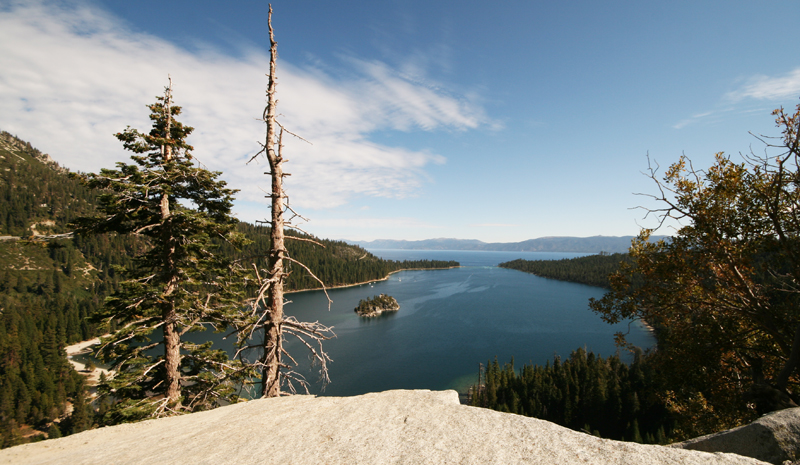Got Mussles? Lake Tahoe does, and officials are doing their best to get rid of them.
First discovered on a beach in Emerald Bay in 2009, Asian Clams have multiplied rapidly and now number up to 12 million, covering an area of 5.5 acres, in Emerald Bay alone. The invasive clams threaten to alter the habitat for fish and other water life, alter the natural food chain, and reduce the clarity of the water. The waste from the clams effectively fertilizes algae in the lake causing it grow rapidly, which changes the water color and even affects the taste of used for drinking water. Dead and rotting clams also wash up on the beach, which have lead to complaints from both residents and tourists.
The Asian clam is a small, light-colored bivalve, and adults can reach up to 50mm in length. The shell is normally a yellow-green to brown color and the shell is composed of thick, concentric rings. Their spawning season normally lasts 6 months starting in early summer, and they have a lifespan of 1-4 years. During their reproductive period each clam can produce more than one million eggs. It’s not  known how they were introduced to the U.S., however they can now be found in fresh waters throughout the United States, including San Francisco Bay, where in some areas they have displaced virtually all other invertebrates, reducing biological diversity to almost zero. At Lake Tahoe, they can be found in the first few inches of silt on the lake bottom.
known how they were introduced to the U.S., however they can now be found in fresh waters throughout the United States, including San Francisco Bay, where in some areas they have displaced virtually all other invertebrates, reducing biological diversity to almost zero. At Lake Tahoe, they can be found in the first few inches of silt on the lake bottom.
At Emerald Bay, biologists are attempting to eradicate the Asian clams using a unique method – smothering them with a thin rubber barrier. The black rubber sheeting is rolled out in 10-foot by 100-foot sections, placed on the lake floor by scuba divers, and secured with tie-wraps to steel rebar. It’s a method that’s proven successful before, and is being used in other areas of the country encountering similar invasions. The method is especially appropriate for Lake Tahoe where chemicals cannot be used in the water, and water levels cannot be lowered.
The hope is that the population can be reduced before they become unmanageable in Lake Tahoe’s 191 square miles of water. While other areas of Lake Tahoe are more heavily infested (with up to 7,000 clams per square meter), Emerald Bay (with an estimated 50 per square meter) is in the earlier stages of invasion, with clam numbers deemed small enough to still manage. Researchers hope to kill off 99% of the clams under the mats.
The $810,000 project in Emerald Bay is being funded by the Lahontan Regional Water Quality Control Board, the U.S. Fish and Wildlife Service and U.S. Forest Service. The project begins this month (October) and it will take about 6 weeks to place all the barriers, which will stay in place for one year. This is currently the largest Asian clam control project in the nation.
Officials are cautioning boaters that there may be delays in entering Emerald Bay while the mats are being placed. Installing the mats will be done on weekdays to reduce interference with boat traffic.
.
.

